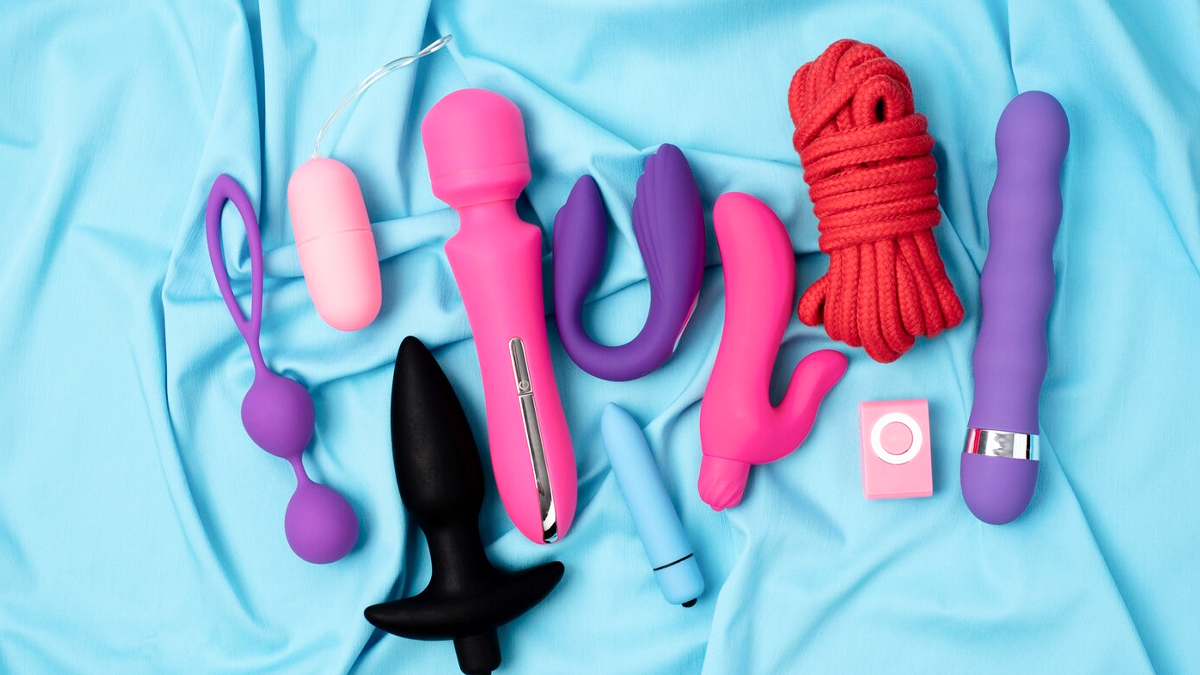
In today’s world, sexual wellness has found a new meaning. People are way more open to explore, keeping their sexual health as the topmost priority. The growing demand of sex toys, in both singles and couples, proves this even more. While the use of sex toys is always a welcome move for those who want to amp up their intimacy game, did you know it comes with its own set of risks? Yes, you read that right. Sex toys can spread sexually transmitted infections (STIs), depending on various factors. If you want to be safe than sorry, and develop more awareness around it, then this article is definitely for you.
Table of Content:-
The editorial team of OnlyMyHealth reached out to Dr Sadhna Singhal Vishnoi, Senior Consultant – Obstetrics and Gynecology, Cloudnine Group of Hospitals, New Delhi, who gave us an expert view on this topic. Read ahead.
Can Sex Toys Cause STIs?
Without making you wait any further, we will straightaway get to the point – can sex toys actually cause STIs? “Yes, sex toys can transmit STIs when they are shared between partners or used without cleaning properly. Many sexually transmitted organisms — such as viruses, bacteria, and fungi — can survive on the surface of toys for minutes to hours, sometimes even longer depending on the material. If a toy comes in contact with vaginal fluids, semen, rectal secretions, or blood, and is then used by another person or reinserted without cleaning, it can transfer these pathogens. Even toys used by one single person can cause infections, if they are contaminated or not cleaned correctly,” answers Dr Vishnoi.
Now, let us tell you what kinds of STIs can be spread from sex toys.
“Majority of the STIs that spread through genital fluids or skin-to-skin contact can be transmitted through shared sex toys. This includes chlamydia, gonorrhea, trichomoniasis, HPV, herpes, syphilis, and hepatitis B. Toys that cause minor internal abrasions can make it easier for these pathogens to enter the body. The risk of transmission varies with the type of toy, whether condoms are used on the toy, and how thoroughly it is cleaned between uses,” shares the expert.
Also Read: How to Lessen the STD Risks of Sharing Sex Toys
Can Sex Toys Spread HIV?
When it comes to sexually transmitted infections, HIV remains one of the most deadly ones. Now that we know that sex toys can spread different kinds of STIs, another question that may have crossed your mind is – is HIV on the list too? Our expert answers this for you.

“The risk is extremely low but not zero. HIV does not survive long outside the body, but if a toy has fresh blood or genital fluids on it and is immediately shared, transmission could theoretically occur. Using condoms on toys and cleaning them thoroughly eliminates this risk,” explains Dr Vishnoi.
But, she sheds light on how sex toys can cause vaginal infections. “Badly cleaned or shared toys may lead to bacterial vaginosis, yeast infections, UTIs, and pelvic infections. Toys contaminated with fecal bacteria, vaginal discharge, or soap residue can disrupt the vaginal microbiome. Using condoms on toys, avoiding back-to-front use, and maintaining proper hygiene helps prevent these problems,” advices Dr Vishnoi.
Tips To Safely Use Sex Toys To Prevent STIs
On this note, Dr Vishnoi shares some simple precautions that can significantly reduce STIs risk from sex toys:
- Do not share sex toys. If sharing is unavoidable, use a fresh condom on the toy for each person and each act.
- For penetrative toys (vaginal or anal), use condoms even during solo play to keep them cleaner.
- Avoid switching a toy from the anus to the vagina without changing the condom or washing it, as this can cause bacterial infections.
- Choose toys made of non-porous materials like silicone, stainless steel, or glass; they do not trap bacteria the way porous materials (jelly rubber, latex, leather) do.
- Check for cracks or tears in the toy’s surface, as these can harbor germs. Replace damaged toys immediately.

Tips To Clean Sex Toys The Right Way
Dr Vishnoi mentions that correct cleaning of sex toys depends on material and whether the toy is waterproof. On this, she shares some general guidelines to clean it the right way. Let’s take a look at them:
- Wash before and after every use, using warm water and mild, unscented soap.
- For silicone, glass, or stainless-steel toys, boiling water (if the manufacture allows) or a sex-toy cleaner can be used for deeper disinfection.
- Ensure the toy is fully dry before storing to prevent fungal growth.
- Store in a clean, dry pouch away from dust and moisture.
- Battery-operated or motorised toys should not be submerged; instead, clean the surface carefully with a damp cloth and soap or an approved cleaner.
Also Read: Can You Get STDs Without Intercourse? Find Out Here
The Final Word
Sex toys can transmit sexually transmitted infections, if they are shared between partners or used without proper cleaning. Many sexually transmitted organisms — such as viruses, bacteria, and fungi — can survive on the surface of toys for minutes to hours, sometimes even longer depending on the material. Thus, one must follow certain hygiene practices while using sex toys to keep themselves and their partners safe.
Also watch this video
How we keep this article up to date:
We work with experts and keep a close eye on the latest in health and wellness. Whenever there is a new research or helpful information, we update our articles with accurate and useful advice.
Current Version
Nov 29, 2025 02:25 IST
Published By : Shruti Das